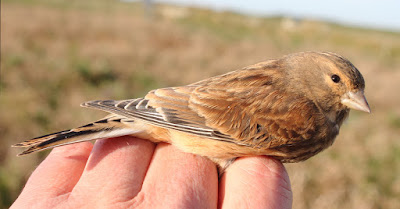After an uncommonly warm October the weather is back with a November vengeance. The cold northerly wind dictated no ringing at exposed sites so I opted for a spot of early birding over Pilling and Cockerham way.
The moss road was quiet in the half-light where the Barn Owls of late summer are but a distant memory. I’ve not seen a Barn Owl for a number of weeks except for a single one flying over my headlights during a pitch black journey towards the hills and an early morning ringing session at Oakenclough.
Viewing Rawcliffe Moss from the roadside I discovered where the Whooper Swans fly to in the morning from their roost on Pilling Sands. I counted 200 or more partly hidden by a fence with mainly their heads poking above the margins of marshy hollow. A couple of farming types had crossed the field on heavy machinery and caused the swans to break off from their feeding to look around for an escape route. Some swans flew off to east and above my head but mostly they stayed put when the vehicles approached no further.
Whooper Swans
At Braides Farm I just scratched the surface of birds on the small flood and the rough grass fields with minima of 250 Golden Plover, 200 Lapwing, 60 Curlew, 40 Wigeon, 4 Black-tailed Godwit and 6 Redshank. I‘ve had two recent and reliable reports of a Hen Harrier in this area but seeing it for myself is proving difficult and potentially very time consuming. This really is a problematic spot to view via the distant gateway but clearly much safer than stopping on the fast and twisting road where another fatal accident took place just weeks ago when a car drove into the rear of a large farm vehicle.
Hen Harrier courtesy of USFWS
An hour at the pool and creeks of Conder Green produced a selection of wildfowl but not so many passerines; 139 Teal, 26 Wigeon, 10 Little Grebe, 4 Goosander, 1 Shelduck, 1 Pied Wagtail, 1 Grey Wagtail, 4 Goldfinch. Waders: 28 Redshank, 1 Spotted Redshank, 10 Snipe, 1 Black-tailed Godwit and 34 Curlew.
A lot of the Curlews that inhabit our fields and shores at the moment are immigrants from other parts of Europe, spending the winter in temperate Britain to escape the extreme cold of the far north and east. In turn many of our UK Curlews fly south and west to Ireland or the coasts of France and Spain and return here in the spring.
Curlew
Curlew distribution
Curlews use their extraordinary long bills to the full by feeding deep into mud or very soft ground, searching for worms and other invertebrates. They also take crabs and similar items in shore and estuary environments.
That’s all for now folks. It’s Bonfire Night and I need to go and light my sparklers. Either that or blow up the Houses of Parliament. See you soon.
Linking today to Anni's Birding.
Linking today to Anni's Birding.












































.jpg)














